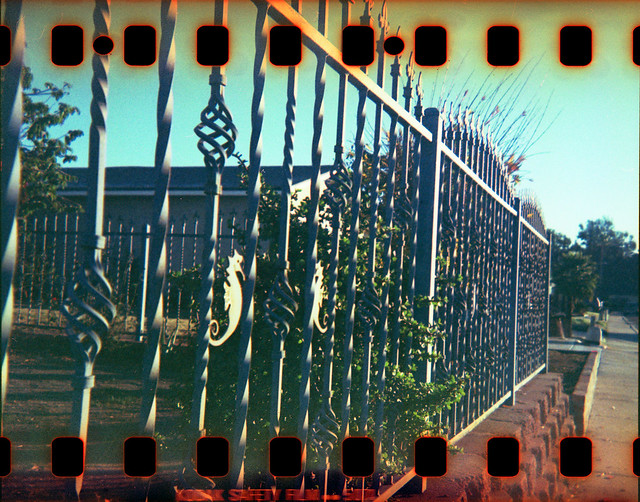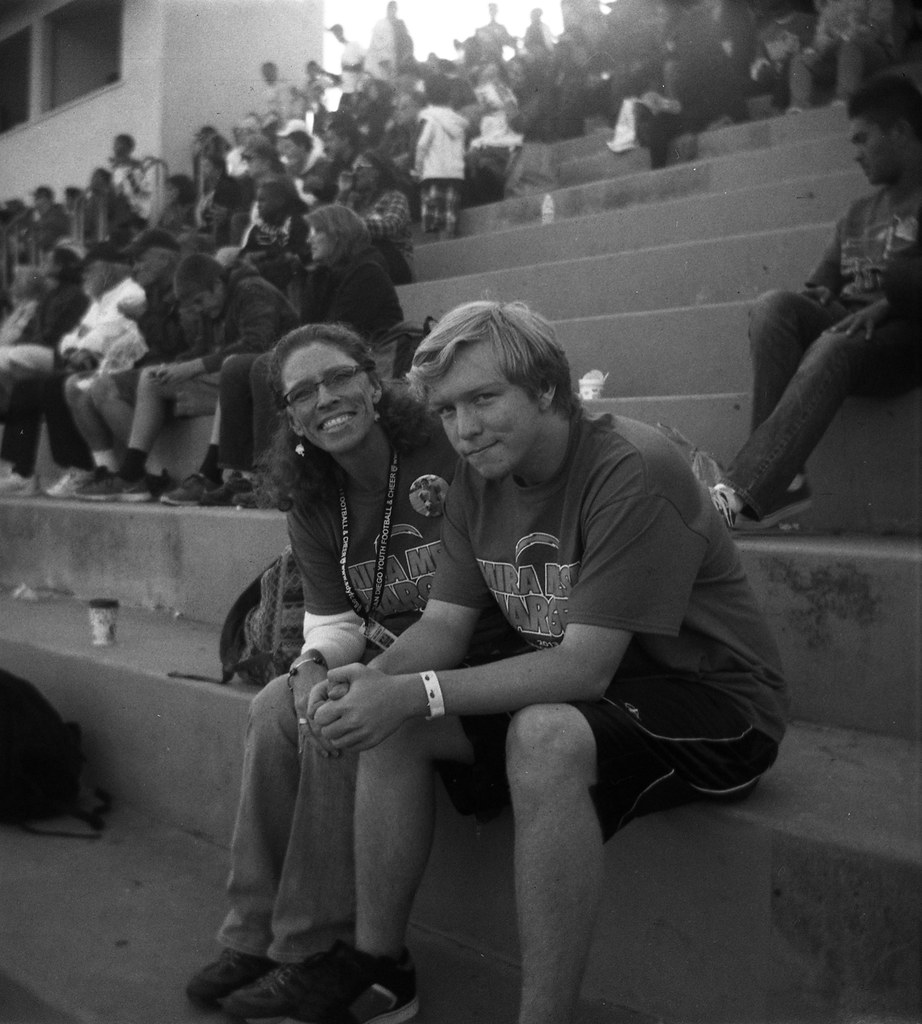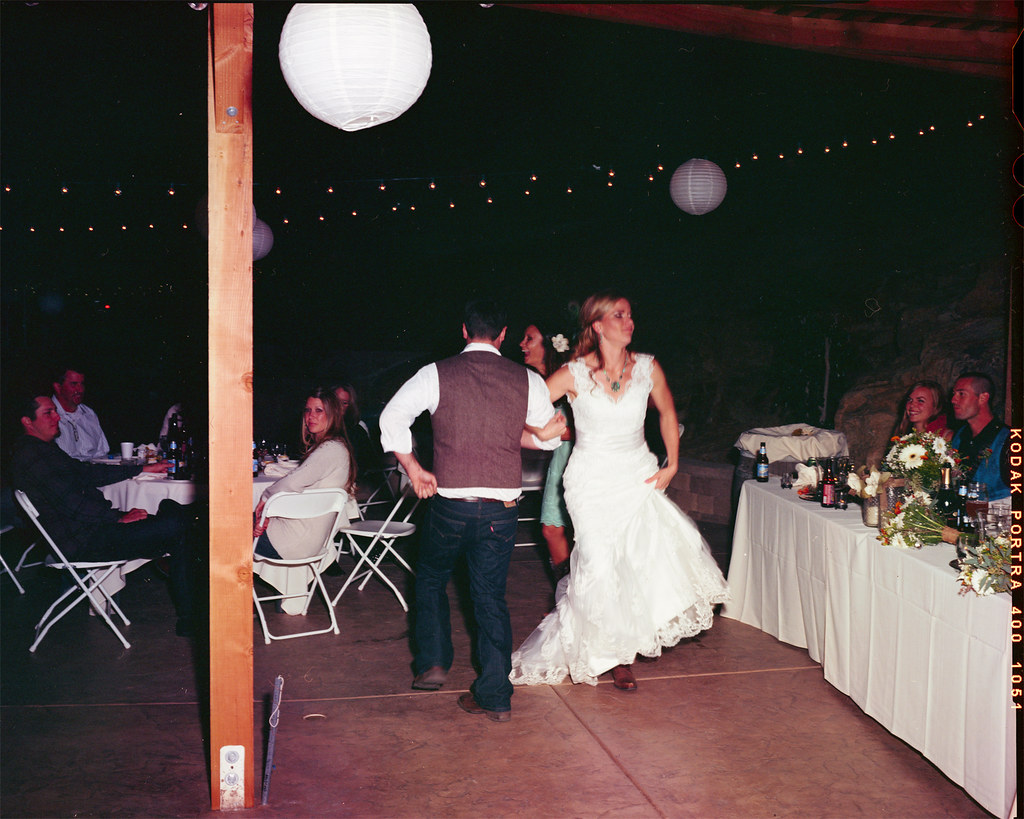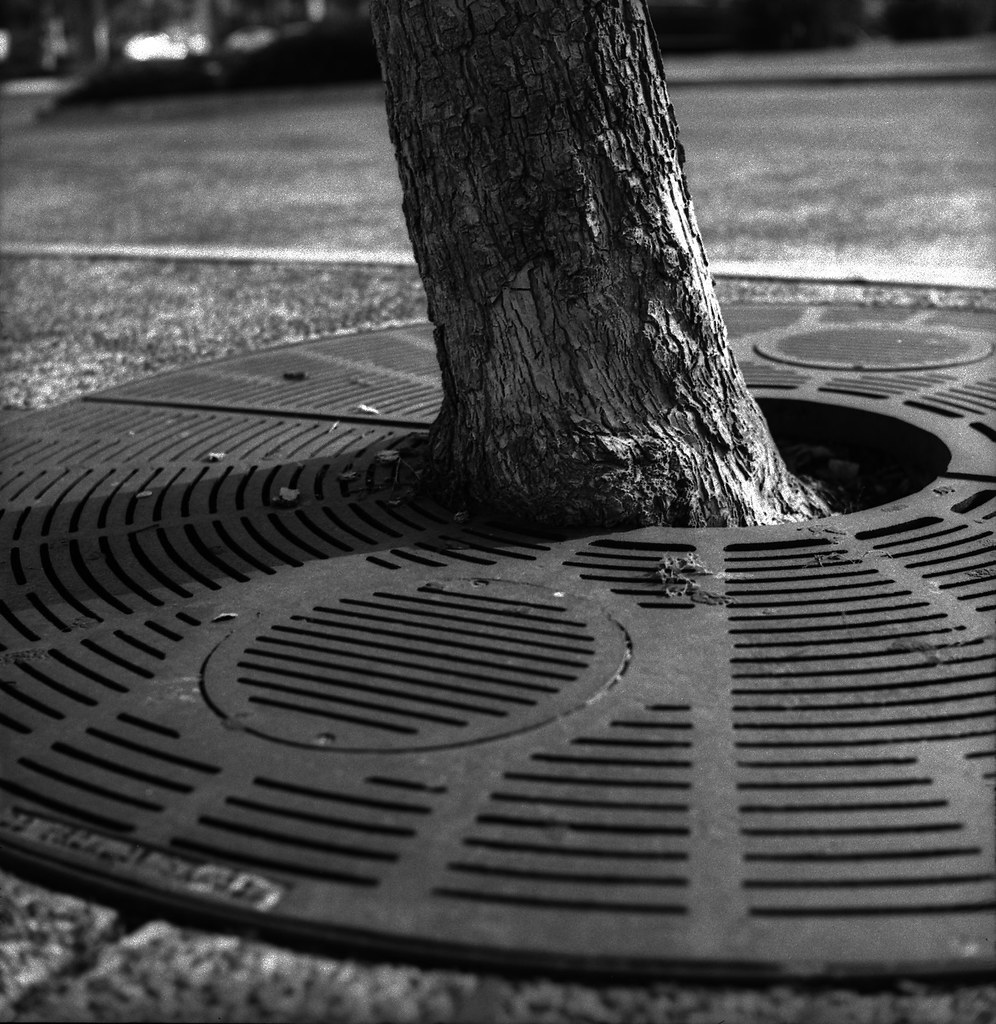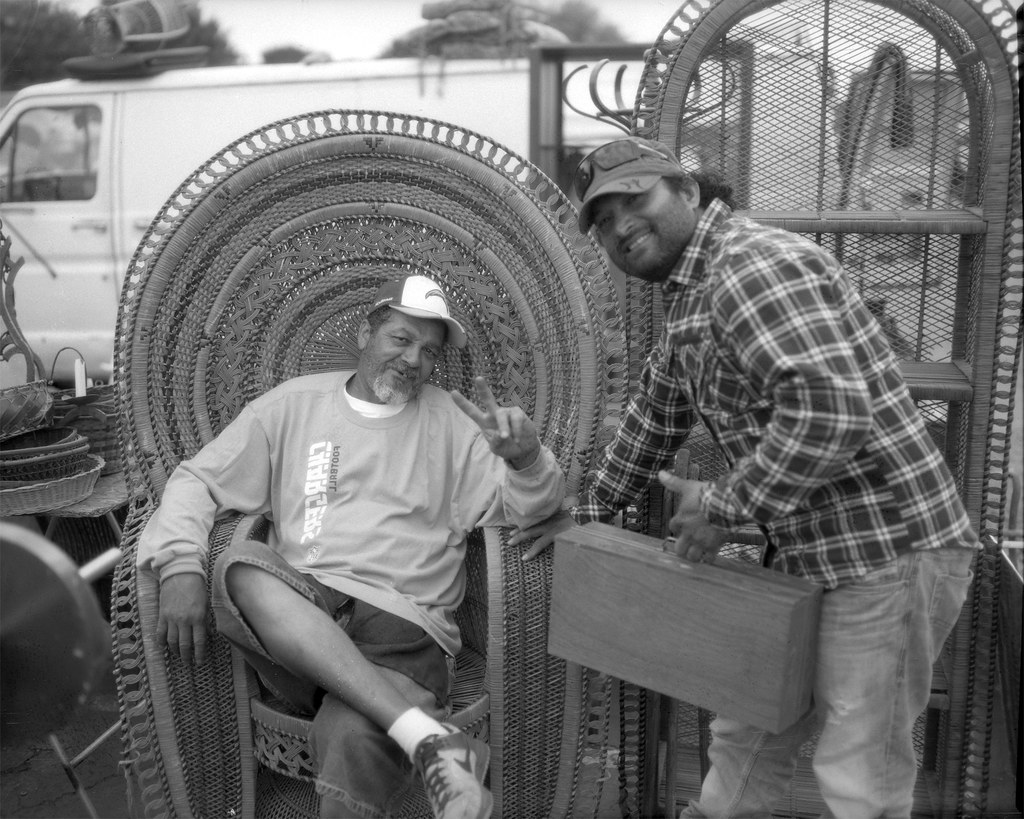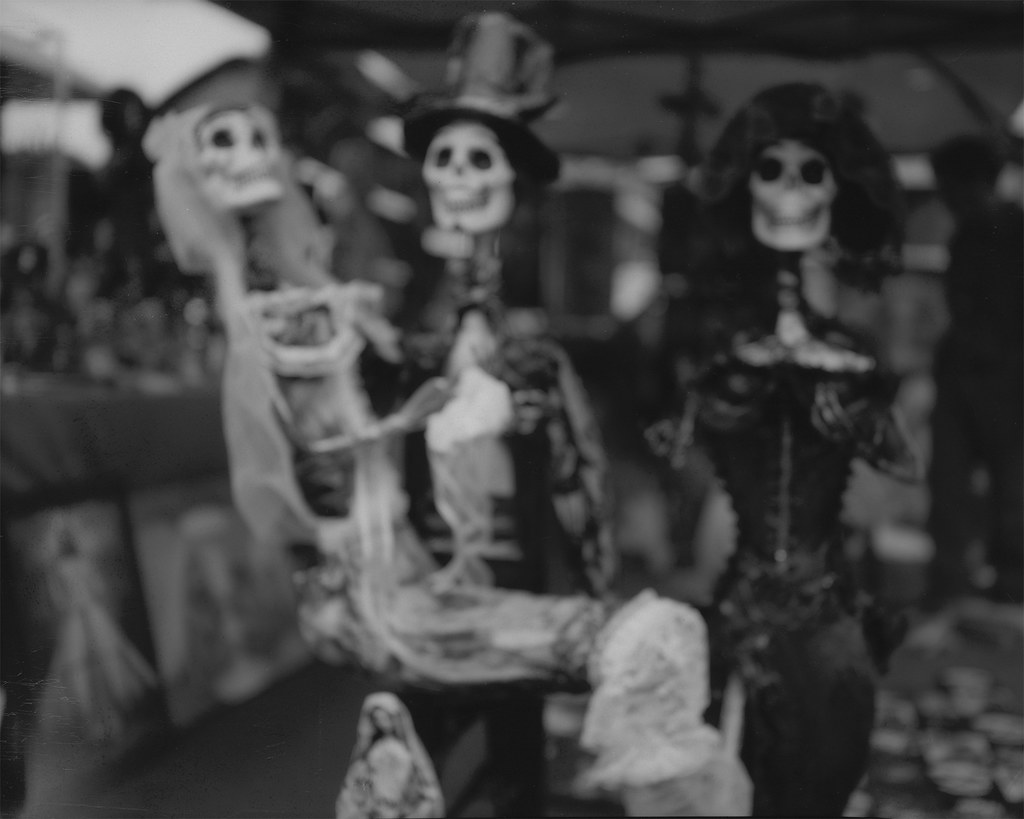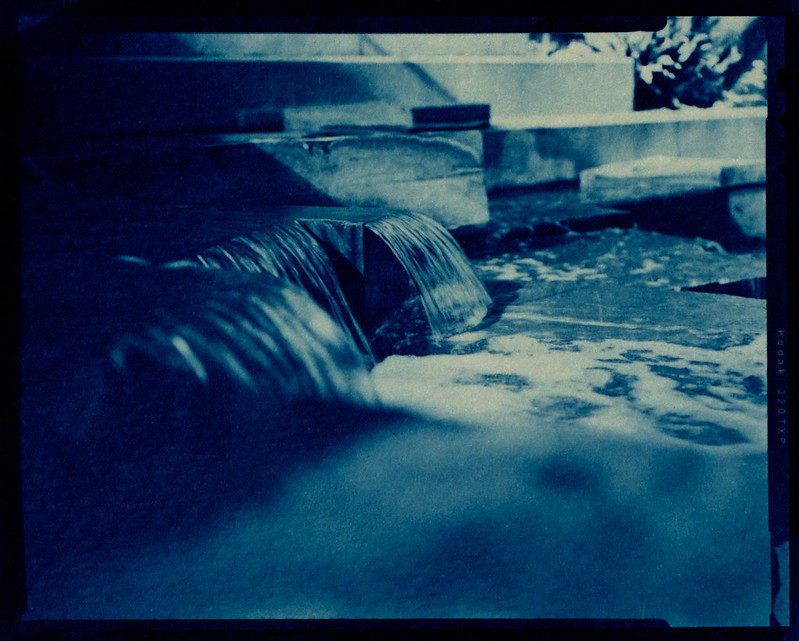What I really want to talk about is the practice of putting 35mm film into a camera of a larger format so that the film is exposed from edge to edge, and then scanning or printing that film from edge to edge so as to show the sprocket holes perforating the image.
Almost every camera has a 'mask'. This is a square or rectangular frame that sits in front of the film and blocks light from reaching some parts. In a standard 35mm camera, the mask is 36mm wide by 24mm high. That is what gives you that nice 2:3 aspect ratio. So when you take 35mm film and put it in a camera that has a larger mask, the top and bottom parts of the film are not blocked and so the image extends out to the edges.
In my case, I used a Kodak Brownie Fiesta camera. This was designed in the 50's to use 127 roll film and its mask is about 4x4cm square. That is more than enough to expose the entire 35mm height of 35mm film. The final image will then be 35mm high and 40mm wide, almost square. So I measured the length of a standard 127 roll of film and cut a piece of string that long. Then I taped it down to the counter in my darkroom (bathroom). Boom, boom, out go the lights and out comes my 100ft roll of Kodak Ektachrome Slide Duplicating Film. I roll out a piece the right length, measuring it against the string on the counter which I can feel in the dark. Now is the tricky part. I have to tape the film to the middle of the backing paper and I have to do it so that the edges of the film are parallel to the edges of the backing paper... in the dark. It took a few tries, but eventually, it 'felt' like I had it all pretty close. There were creases in the backing paper where the film started, so I was able to get it easily to the right place longitudinally. So I roll up the paper and film on a 127 spool and emerge into the light and load it into the camera.
Now the Brownie line of cameras are very simple. They have fixed focus plastic meniscus lenses, a single shutter speed and usually just one or two apertures to choose from. I think they were made with 50 - 100 speed film in mind. So even though this film is probably closer to iso 25, I figured the latitude of the C-41 process would compensate and I would get images, even if the quality was sub-optimal. It's all about experimentation, right? Nobody makes anything awesome by doing what everyone else does. Ok, that's not exactly true, but it sounded sort of inspirational in my head. Anyway, here are a couple more "Sprockets!" images from my Brownie. Enjoy.


